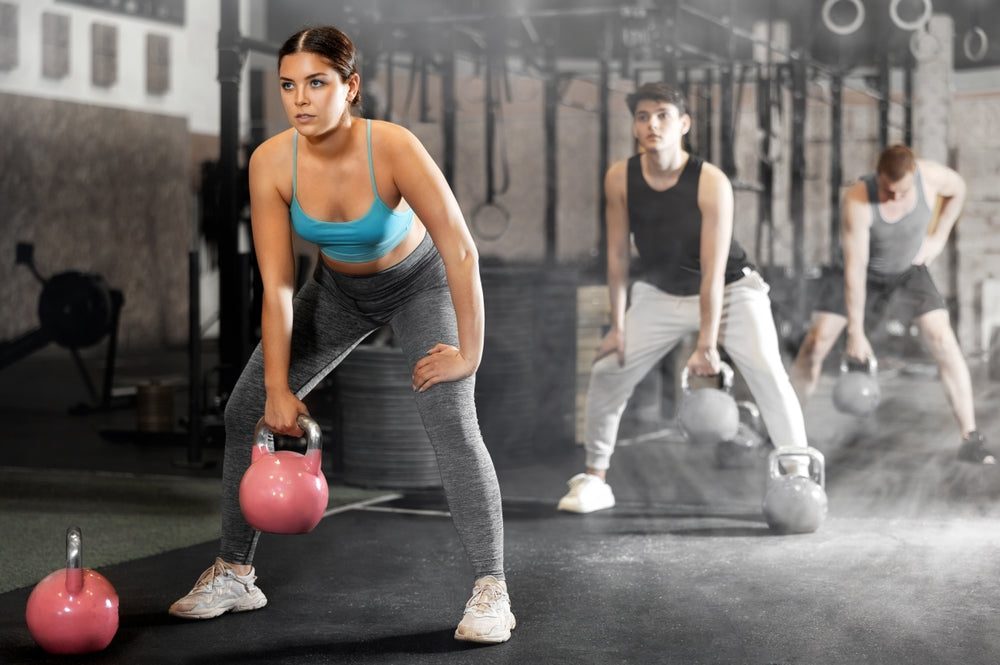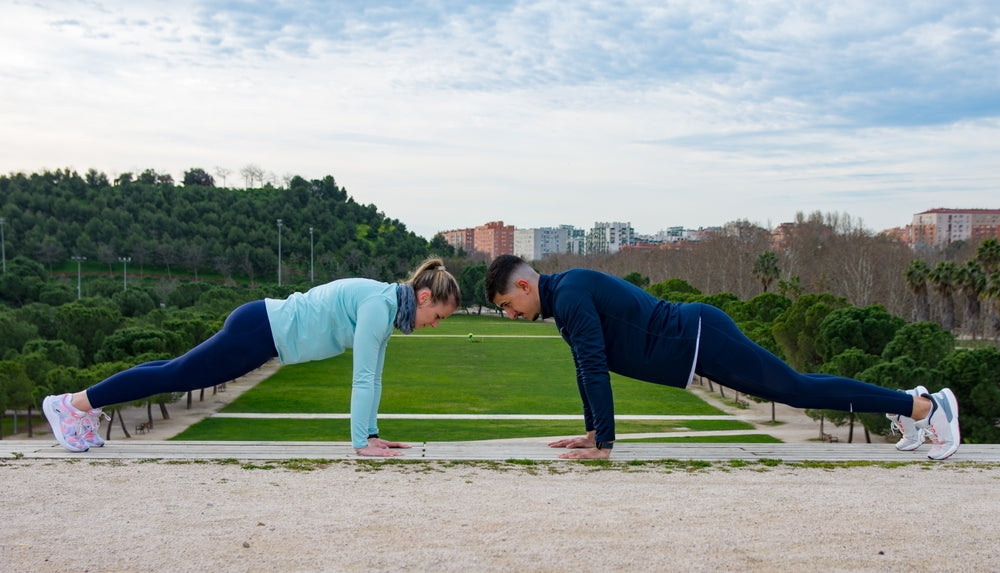
How to Improve Balance and Coordination with Functional Training
Hey, hey, fitness fam! 💪 Ready to feel more confident on your feet, move with ease, and level up your stability game? Balance and coordination are essential for everything we do—whether it’s crushing a workout, walking gracefully, or just staying upright on slippery floors. But here’s the thing: they often get overlooked in favor of flashy strength or cardio routines.
Let’s change that! With functional training, you can improve your balance, coordination, and overall movement while having FUN. Ready to dive in? Let’s go!
What Is Functional Training?
Functional training is like training for real life. These exercises mimic everyday movements—think bending, twisting, and reaching—so you’re not just building strength but also enhancing how your body works together as a whole. Instead of isolating a single muscle, functional training focuses on multi-joint, multi-muscle, and multi-directional movements that challenge your stability and coordination.

Examples? A single-leg deadlift is like bending to pick something up, while medicine ball twists mirror turning to grab something. It’s all about making your muscles team up for smooth, efficient, and safe movements.
Why Balance and Coordination Matter
Balance and coordination aren’t just for yogis or athletes—they’re for EVERYONE. Here’s why working on them is such a big deal:
-
Fewer Falls, Fewer Injuries: Good balance keeps you steady on uneven ground or during sudden movements (like dodging that Lego piece on the floor). No wipeouts here!
-
Better Athletic Performance: Sports often involve quick cuts, jumps, or turns, which require coordination. Functional training helps you move like a pro.
-
Improved Posture and Stability: A strong sense of balance helps keep your body aligned, reducing strain on your back and joints.
-
Easier Everyday Movements: Carrying groceries, bending to tie your shoes, or chasing after your dog? Functional training makes these feel effortless.
How Functional Training Improves Balance and Coordination
It’s all about proprioception—your body’s ability to sense its position and movement in space. Functional exercises train your neuromuscular system (fancy term for how your brain and muscles talk to each other) to react faster and move more fluidly. Think of it like upgrading your movement “software.”
Research backs it up: incorporating unstable surfaces, dynamic movements, and multi-directional challenges can significantly improve balance and coordination (Behm & Colado, 2012).
Top Functional Training Exercises for Balance and Coordination
Here’s where the fun begins! These moves will challenge your body and help you build serious stability and control.
-
Single-Leg Deadlifts
-
Why It Rocks: Improves balance while strengthening your hamstrings, glutes, and core.
-
How to Do It:
-
Stand on one leg, holding a dumbbell or kettlebell in the opposite hand.
-
Hinge at your hips, lowering the weight toward the ground as your free leg extends back.
-
Return to standing without letting your foot touch the ground.
-
-
Reps: 8-10 per leg.
-
Bosu Ball Squats
-
Why It Rocks: Engages stabilizing muscles as you balance on an unstable surface.
-
How to Do It:
-
Stand on the flat side of a BOSU ball with feet shoulder-width apart.
-
Perform a squat, keeping your core tight and chest lifted.
-
Slowly return to standing.
-
-
Reps: 12-15.
-
Medicine Ball Rotational Throws
-
Why It Rocks: Strengthens your core and coordination while improving rotational power.
-
How to Do It:
-
Stand a few feet from a wall with a medicine ball.
-
Rotate your torso and throw the ball against the wall.
-
Catch the ball and repeat on the opposite side.
-
-
Reps: 10 throws per side.
-
Side Lunges with a Reach
-
Why It Rocks: Challenges your balance and lateral stability.
-
How to Do It:
-
Step out to the side into a lunge, keeping one leg straight and the other bent.
-
Reach toward the ground with the opposite hand.
-
Push off your bent leg to return to standing.
-
-
Reps: 10 per leg.
-
Plank with Shoulder Taps
-
Why It Rocks: Builds core stability while challenging your balance.
-
How to Do It:
-
Start in a plank position with hands under shoulders.
-
Tap your right hand to your left shoulder without shifting your hips.
-
Alternate sides.
-
-
Reps: 20 taps (10 per side).
-
Farmer’s Carry with Single Arm
-
Why It Rocks: Strengthens your core and improves balance while walking.
-
How to Do It:
-
Hold a heavy dumbbell or kettlebell in one hand at your side.
-
Walk forward in a straight line, keeping your core tight.
-
Switch sides.
-
-
Duration: 30 seconds per arm.
-
Standing Yoga Poses (Tree Pose or Warrior III)
-
Why It Rocks: Boosts proprioception and overall balance.
-
How to Do It:
-
For Tree Pose: Stand on one leg and place the opposite foot on your inner thigh or calf.
-
For Warrior III: Hinge forward while extending one leg back and arms forward.
-
-
Hold: 20-30 seconds per side.
How to Add Functional Training to Your Routine
-
Start Small: Master the basics like standing on one leg before tackling more dynamic moves.
-
Mix It Up: Combine different exercises to keep things fun and challenging.
-
Use Equipment: Add BOSU balls, resistance bands, or medicine balls for variety.
-
Consistency Is Key: Aim for 2-3 sessions a week to see real progress.
-
Focus on Form: Proper technique = better results and fewer injuries.
Sample Functional Training Circuit (15-20 Minutes)
-
Single-Leg Deadlifts: 8-10 reps per leg
-
Bosu Ball Squats: 12 reps
-
Plank with Shoulder Taps: 20 taps
-
Side Lunges with a Reach: 10 per leg
-
Farmer’s Carry with Single Arm: 30 seconds per arm
-
Tree Pose: Hold for 20 seconds per leg
Repeat 2-3 times with minimal rest between exercises.
Why You’ll Love Functional Training
Functional training isn’t just about building balance and coordination—it’s about moving confidently in every part of your life. Whether you’re chasing your kids, crushing a workout, or just walking tall, these exercises help you feel stronger, steadier, and more capable.
Let’s Get Moving!
Ready to feel steady and strong? Start adding these functional training exercises to your routine today, and let me know how it goes! Don’t forget: every step toward better balance is a step toward a stronger YOU. You’ve got this! 💪✨
References
-
Behm, D. G., & Colado, J. C. (2012). "The Effectiveness of Resistance Training Using Unstable Surfaces and Devices for Rehabilitation." Journal of Strength and Conditioning Research.
-
American Council on Exercise (ACE). (2021). "The Importance of Balance Training."
-
National Strength and Conditioning Association (NSCA). (2020). "Functional Training and Stability."
What’s your favorite move from this list? Tag me in your progress—let’s balance our way to greatness together!
Meet Fitnexa, your AI-driven companion that turns everyday habits into a positive, uplifting journey. From effortless meal analysis (including recipe suggestions) to personalized coaching and real-time support, Fitnexa keeps you on track toward lasting wellness — so you can stay younger, live longer.
https://apple.co/4hr8JGW





Leave a comment
This site is protected by hCaptcha and the hCaptcha Privacy Policy and Terms of Service apply.